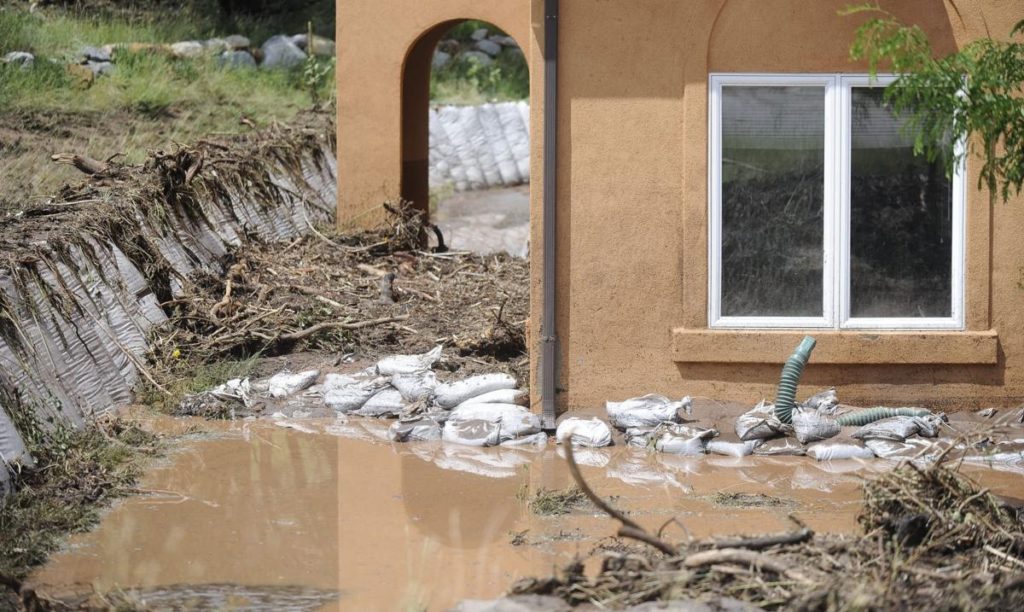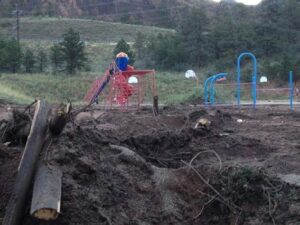How to Prevent Mudslides in California
Discover effective mudslide prevention strategies in California with TrapBag® cellular barriers—trusted globally by municipalities and commercial enterprises.

How to Prevent Mudslides in California
California’s unique terrain and climate make it particularly susceptible to mudslides, especially following the recent wildfires. Officials have warned that the risk of debris flows in burn-scarred areas could persist for up to five years.
If you live or have a business in California, you need to understand how and why mudslides occur, so you can prepare effective prevention strategies to keep your property safe.
Why Mudslides Occur in California
Mudslides pose serious threats in California due to the state’s unique geological and climatic conditions:
- Hydrophobic soils: When wildfires occur, heat transforms the soil and creates layers that repel water, which drastically increases runoff and the risk of mudslides.
- Steep terrain: California’s mountainous regions have steep slopes that can greatly increase the potential of a mudslide
- Atmospheric rivers: Intense rainfall events, common in California winters, can further elevate the probability of catastrophic mudslides.
Recent events, such as the Malibu mudslides of 2025, highlight the significant damage potential that mudslides can have. In that case, regions that were recently affected by wildfires, such as Altadena and Pacific Palisades, were particularly vulnerable due to compromised soil stability. The intense rain led to road closures, evacuations, and at least one vehicle being swept away by a mudslide.

How to Prevent Mudslides
Vegetation Management
Establishing native plants with deep root systems, such as chaparral species like manzanita, stabilizes slopes and effectively reduces soil erosion. Reestablishing vegetation after fires also helps restore natural protection.
Soil Stabilization Practices
California agencies employ proven soil stabilization methods, including geogrid reinforcement, hydroseeding, and erosion-control blankets or mats.
Geogrids provide durable reinforcement for slopes and embankments, while hydroseeding quickly establishes vegetation. Mats and blankets temporarily secure the soil until vegetation takes hold.
Drainage Solutions
Proper drainage control is critical for diverting excess water safely away from vulnerable slopes. Installing French drains, culverts, and engineered drainage channels significantly reduces water accumulation, mitigating mudslide risks by managing stormwater effectively during heavy rainfall.
Site Evaluation
A geotechnical engineer can help evaluate slope stability, particularly after a wildfire or when planning new development on a hillside. You can also request a hazard assessment from your local municipality or county, which can provide you with valuable insight into area-specific risks and necessary permits.
Structural Slope Engineering
This involves the use of built features to reinforce and stabilize vulnerable hillsides. Retaining walls can provide crucial support to prevent slope collapse, especially in steep terrain.
Terracing is another effective strategy, which divides long slopes into smaller, flatter segments that better manage water runoff. Gabion baskets—wire mesh containers filled with rocks—offer additional stabilization by reinforcing slopes in high-risk zones and diffusing the energy of flowing water.
Barrier Systems
When storms are imminent and slopes are unstable, temporary barriers can provide critical protection. A strong and effective barrier system like TrapBag® is built to be deployed quickly and stop mudslides in emergency situations.
Why Choose TrapBag?
Rapid Deployment
TrapBags can be installed using heavy machinery within hours, and they can be filled with sand, gravel, or native soil. They also require up to 50% less fill material than traditional sandbags.
Material Flexibility
TrapBag® barriers provide flexibility in fill materials, allowing use of sand, gravel, or small rocks, ensuring rapid setup even under challenging logistical conditions. They can also withstand years of UV exposure.
Proven Reliability
TrapBag® has proven performance globally, installing over 1,000 miles of barriers around the world. They have been deployed in mountainous regions like Colorado to protect schools, homes, and critical infrastructure from potential mudslides.
Ready to Protect Your Property?
Our erosion and debris flow experts can help assess your needs and recommend a customized TrapBag® solution. Call (239) 674-6611 or request a quote today.
Frequently Asked Questions
Can sandbags stop a mudslide?
Sandbags may help divert minor runoff but aren’t effective against fast-moving debris flows. Systems like TrapBag® offer much more protection.
How long does burn-scarred land stay vulnerable?
Up to five years post-fire, depending on rainfall, soil type, and slope.
What permits are required for erosion control installations?
Local city or county permits are often required for major earthworks or barrier systems. Check with local planning departments.
Meet the author
Get the Dirt Before the Flood Hits
Stay ahead of flooding, erosion, and disaster response challenges. The Dirt, TrapBag’s monthly newsletter, delivers field-tested tips, real-world case studies, and the latest in barrier technology straight to your inbox.

